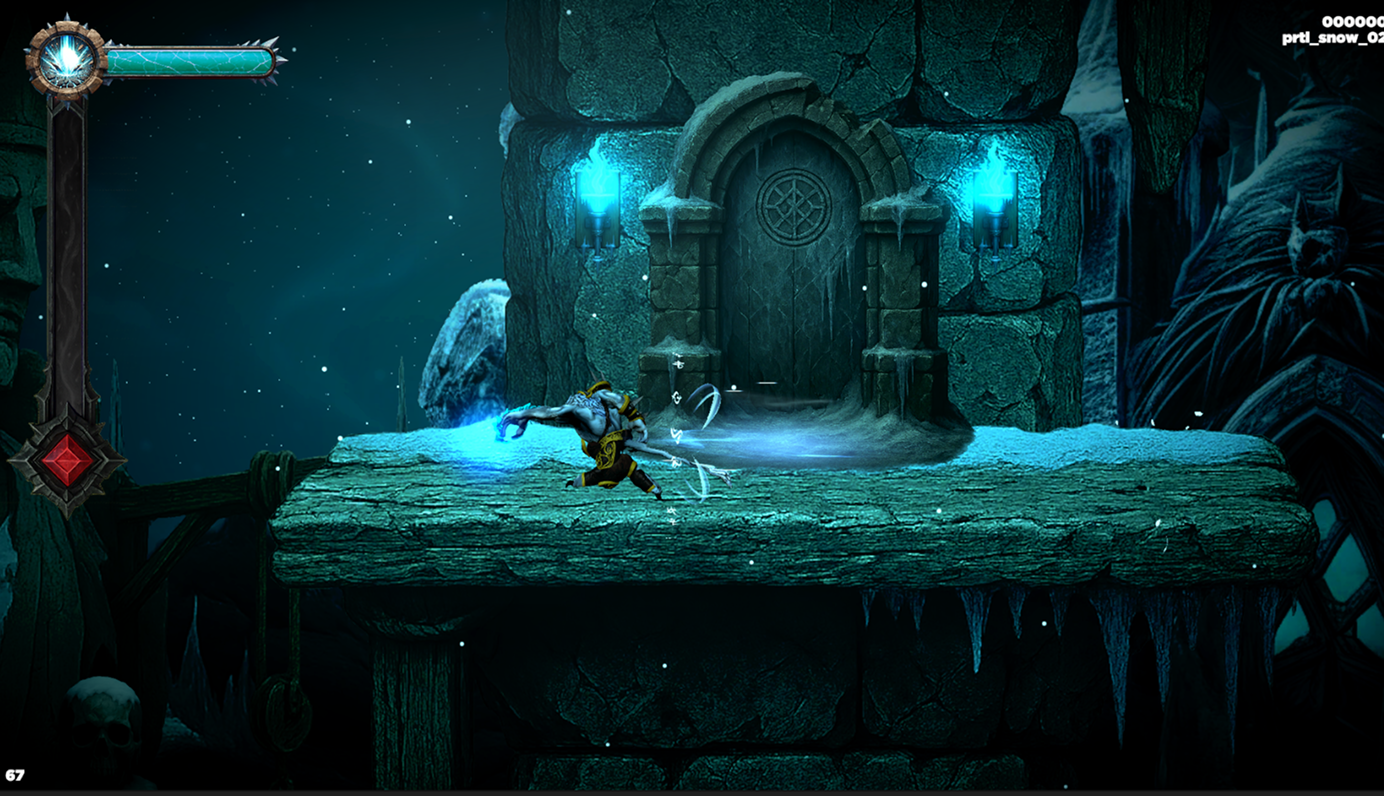
WHERE IDEAS FRACTURE INTO REALITY.
Blightened didn’t start with a story. It didn’t even start with a name. It started with a single test.
A Unity scene made of tiles and long rectangular platforms. A character controller. A basic jump.
I remember dragging a portal sprite into the scene with some particle FX, just to see how it would look. I don’t even remember why. Maybe boredom, probably a creative block.
That original level as empty as it was, became a playground for everything that followed. It was my sandbox.
In hindsight, it was the very first version of the Frozen Sanctuary, the hub world that would later anchor the game.
But back then?
It was still just a stock 3d model jumping around on cubes. Something I wouldn’t even show my dog. A spark can apparently come from anywhere, any time. What came next was pretty wild.
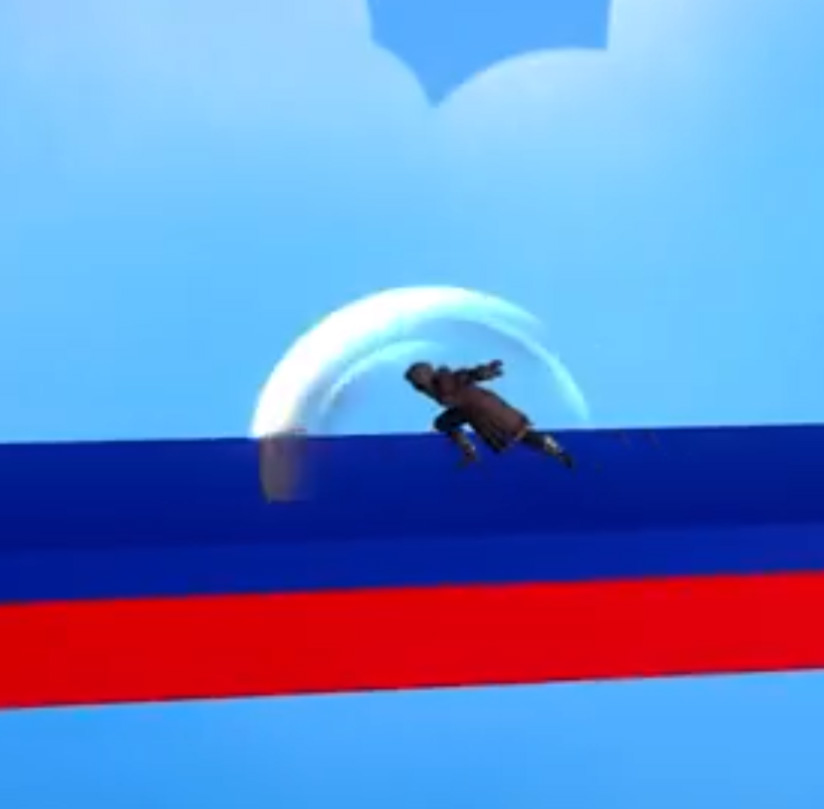
Figma was where the real game started. If you don’t know what it is, look it up or ask ChatGPT or whatever AI you like.
Before scripting logic or importing assets into Unity, I opened a blank board and started designing how everything would connect.
It wasn’t about visuals. It was about systems and what was the core game loop.
I treated it like a control panel. A mind map of every mechanic and event flow I could think of. Some obviously would never make the cut but they were fun to explore.
That Figma board became my living document.
It helped me spot bottlenecks, logic flaws, and visual requirements long before I coded or created them.
I didn’t realize it at the time, but designing like this gave me a vision I could easily iterate on:
I wasn’t just winging it anymore. I actually now had true direction.
And when you're a solo dev, without that, you’ve already failed.
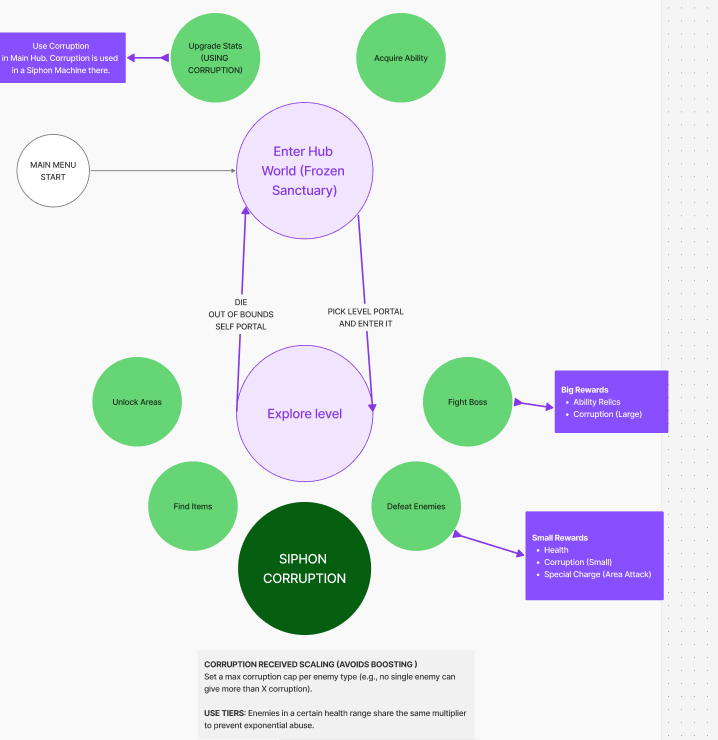
Relics are a core part of Blightened.
They're not just pickups, they're turning points. Each one grants a new ability that fundamentally changes how you play.
I wanted them to feel important. Not just a “you got a new move” message, a moment of satisfaction.
So I froze the world. Literally and visually.
When you touch a relic, time stops.
It’s not flashy but it’s intentional. And it changed the rhythm of the game.
That one frozen moment was a step forward. It’s small, but players should feel it. That’s the thought at the time or at least that’s how I saw it.
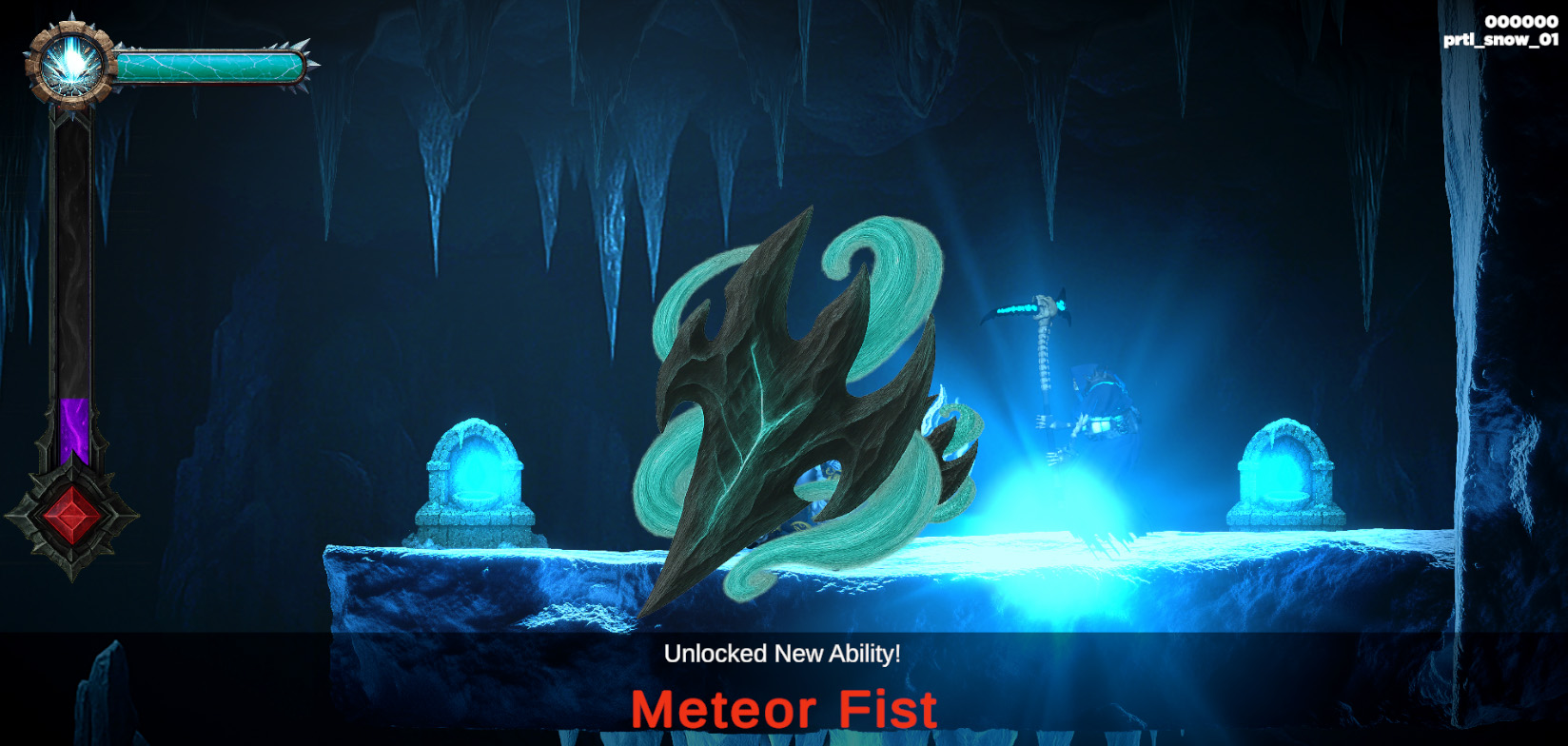
The first real meaningful ability I added to Blightened was the air to ground slam after the core attacks and air motion felt good.
I didn’t add it for combat, I added it for world interaction. Of course, as all seasoned developers know, ideas change and so does effort. But I didn’t focus on requirements, I focused on “fun factor”.
It’s a downward attack that releases a shockwave and breaks brittle floors but can also be used to crush enemies. You see a cracked stone path below you, slam the ground, and boom! New passage unlocked or just go all Super Mario on their asses and send them to oblivion.
It was the first time the player could change the environment.
And it taught me something critical about my own game:
Abilities shouldn’t just hurt enemies. They should reshape area access, like any fun Metroidvania should.
Every ability since then is designed to do both: Most of them at least.
The slam wasn’t just the first power. It was the first time the game told me I needed to add more.

When you use AI tools to help generate assets, you have to set rules.
Without strict visual constraints, your game starts looking like a collage of mismatched art and I’m sure haters will let me know. Lol.
Anyway, I defined the visual law for Blightened:
Every platform. Every prop. Every relic.
These rules make the game feel cohesive, like every piece belongs in the same world.
It’s not about photorealism. It’s about coherence.
When players explore these levels, I don’t want them thinking about asset packs, toolkits, or how it was made. I want them to be “all in” and binge to see what comes next. Who cares how it was created.
And for that, the rules aren’t optional. They became the law. Laws that AI would eventually break.
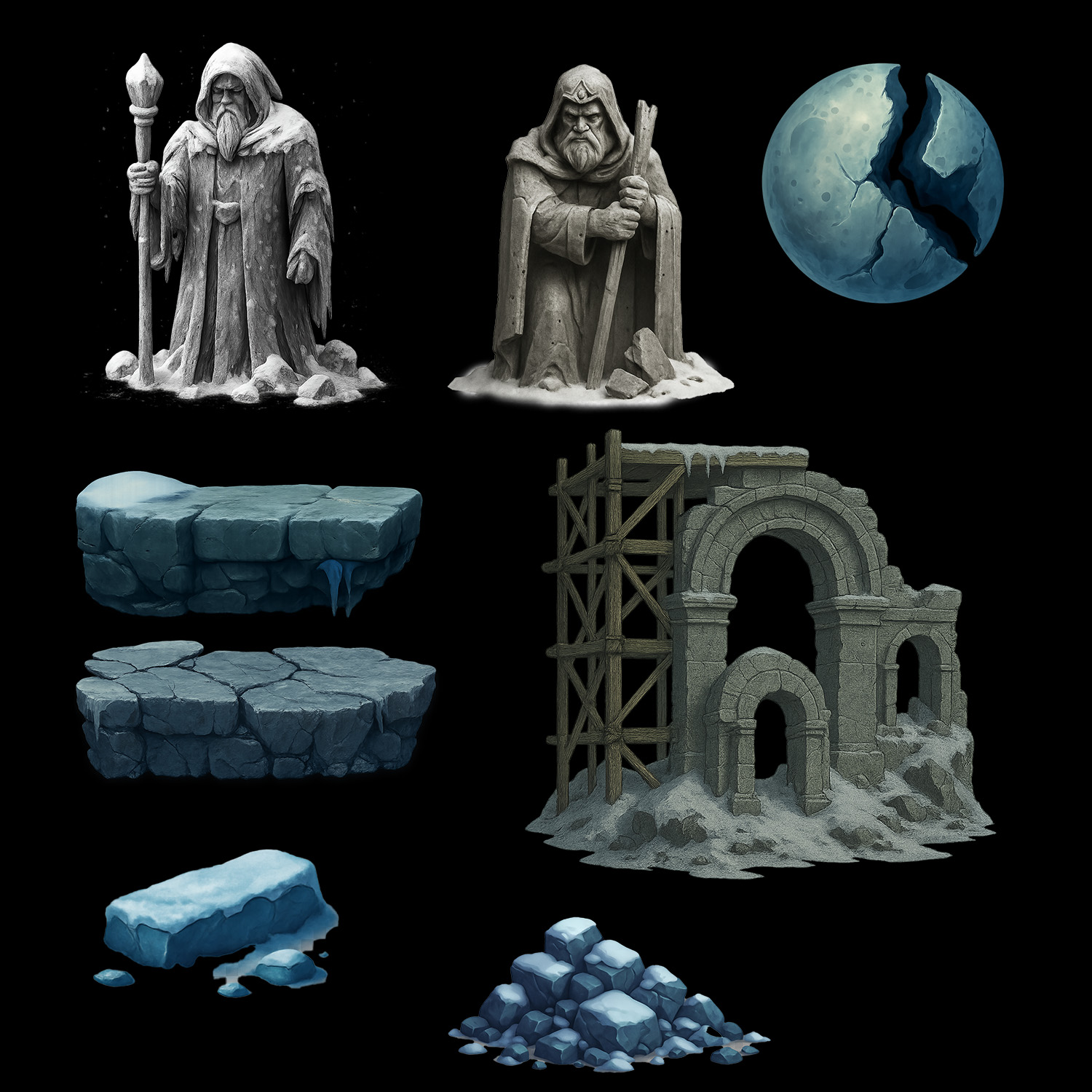
I didn’t want upgrades to feel like flavor text. I wanted them to mean something.
So I created an altar inside the hub — a focal point where you spend XP (Corruption) earned in levels to permanently boost your core stats:
No skill trees. No branching menus. Just clean commitment.
You walk up to the altar. You choose. You lock it in.
No refunds. No mulligans.
The altar tracks your decisions permanently. It makes every point of XP (corruption) matter.
Once it’s spent, it becomes part of you as the player. But damn, it’s another system I have to make that connects with the other ones already somewhat created. Dammit!

In Blightened, levels are accessed through portals. But they don’t all open at once.
Your actions — not just your combat — determine which portal opens next. This would make my life a bit easier and more understandable to the player. It’s the simpler things in life.
Sometimes it’s collecting a specific relic.
Other times it’s finishing an objective tied to the Druid’s story.
When you meet the condition, the Druid unlocks the next portal for you.
This system ties story and progression together.
You don’t just “beat a level.” You make something happen in the world. And that gives the hub and the portal system a sense of reactive depth.
You’re not just moving forward. You’re unfolding something.
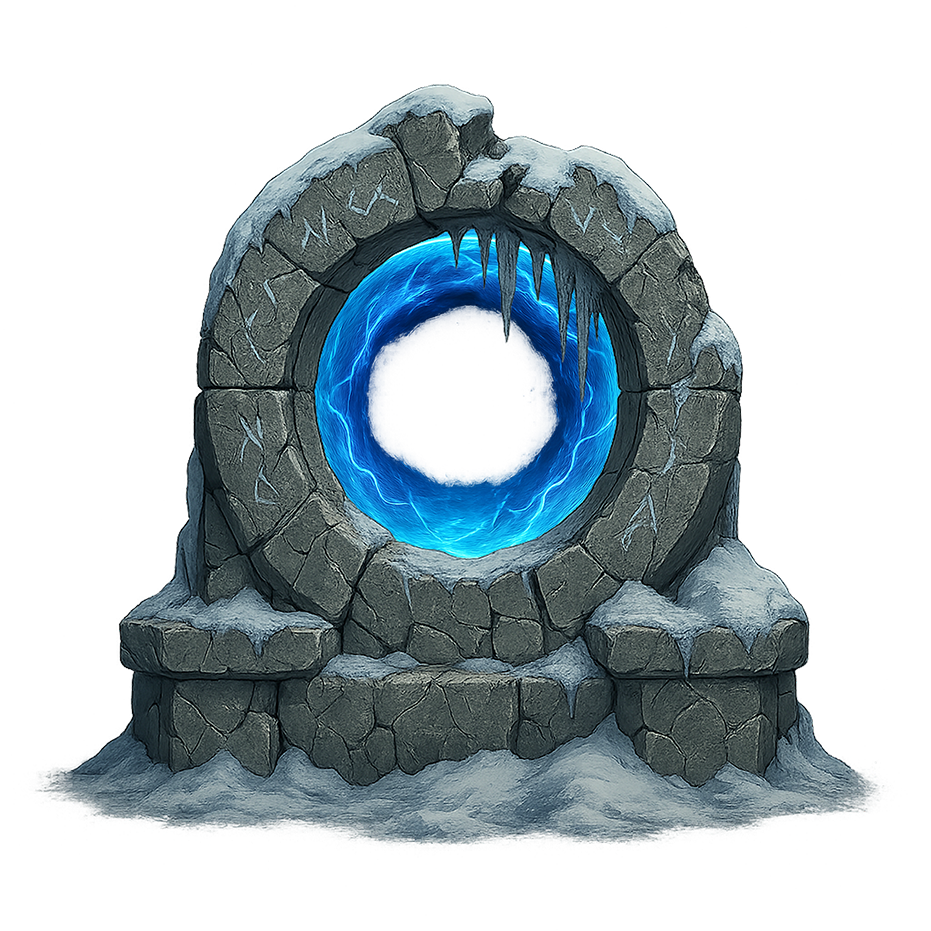
The hub felt empty. Mechanically complete, but emotionally sterile.
I needed someone (or something) to guide the player. But I didn’t want a friendly helper or some basic in-game prompts. I wanted tension.
That’s when the Druid came to me.
He is the one who awakens you. When he speaks, you listen. When he gives you a task, you obey.
He’s the one unlocking portals. He’s in control of where you venture next. He’s the one giving vague objectives in an unconventional way. I want you to hate him. That was my thought at the time.
You’re not buddies. You are his dog and he holds the leash.
There’s power in his design:
The Druid doesn’t just guide the story. Maybe he is the story. I needed to find this out myself and pass that along to the player.
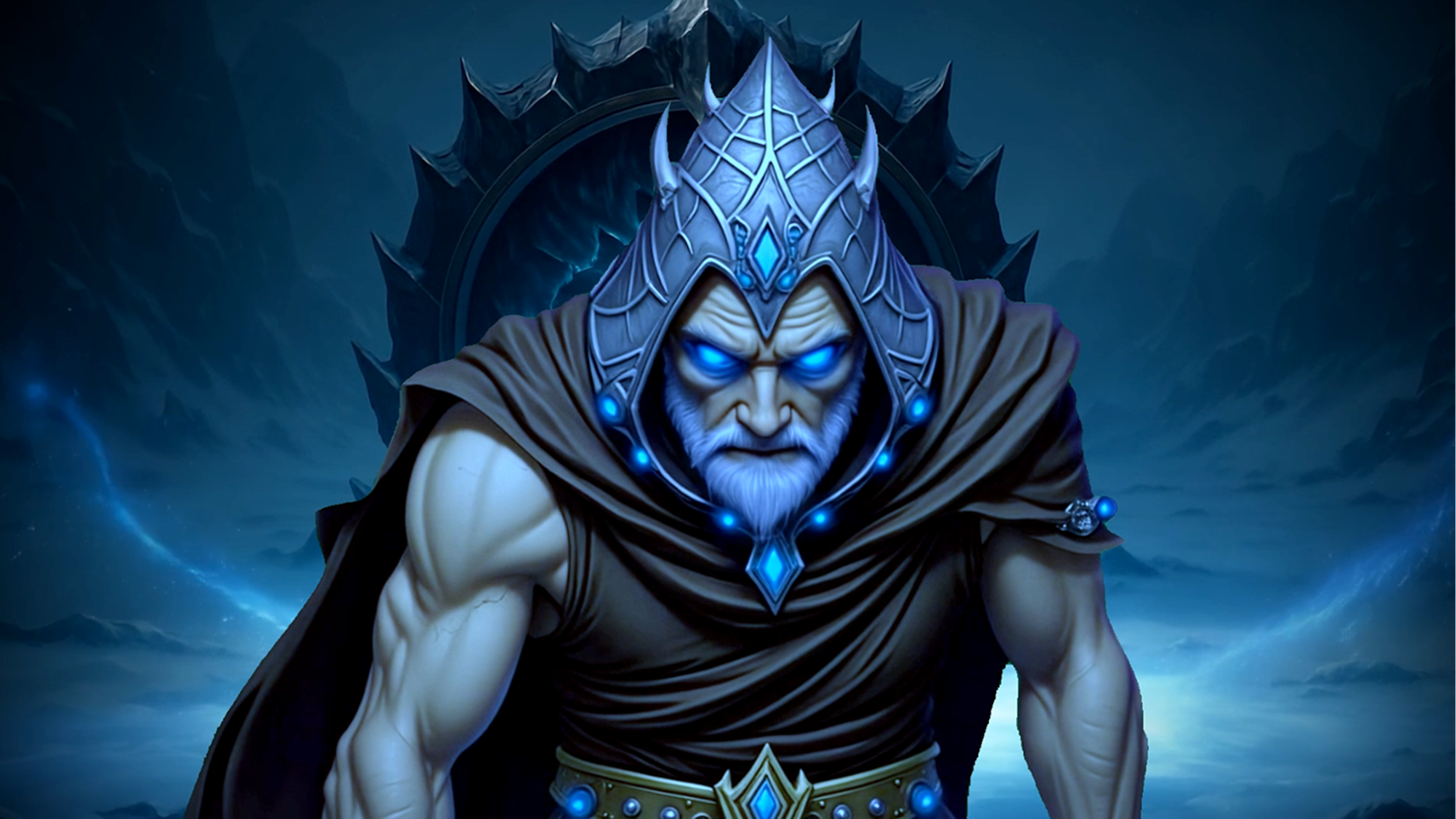
I knew early on I’d need a flexible, reliable save system.
Blightened isn’t just about character growth, it’s about world change.
You unlock relics. You open portals. You complete objectives. And the world needs to remember all of that.
Off I went. I built a custom flexible save system using Unity’s Scriptable Objects — lightweight, modular, and powerful.
It tracks:
This isn’t just saving “where you were.” It’s saving what you changed. It gives the game persistence.
And that makes everything you do permanent.
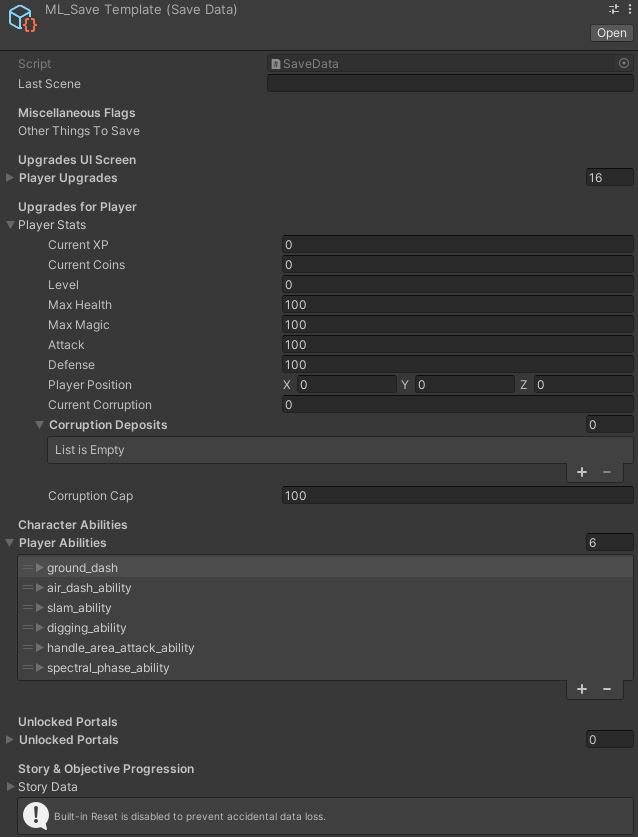
You can have tight mechanics and great visuals, but if your sound design is weak — it all falls flat.
I knew that even my best abilities needed something more: presence.
So I built a layered audio system:
These aren’t random sound clips. Each effect was to be tuned to give the player feedback, satisfaction, and adrenaline.
Some I created. Others were manipulated from base files. But all of them need to turn animation into a different experience once I got started.
Sound isn’t a polish pass. It’s the glue that makes everything feel alive and there’s a lot of work involved.
Props to all the professional sound designers.
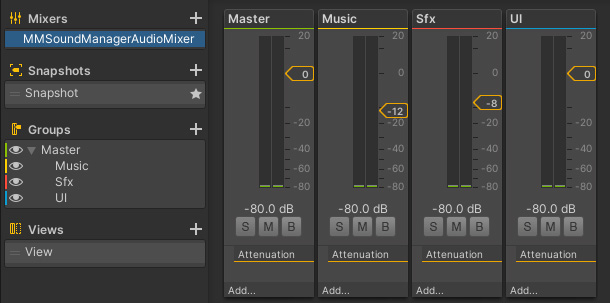
For a while almost every day, I posted a monster.
Each one includes a name, lore, original visual, and voice narration.
But they’re not enemies you fight. They’re not bosses.
In fact, they’re not in the game at all.
These monsters live outside the current vertical slice of the game.
They serve a different purpose: worldbuilding.
While I build the actual systems and levels in Unity, these creatures create mythology, hint at lost lands, and give Blightened something beyond clawing and smashing.
They remind players (and me) that this world could be bigger than what you can currently play.
The monsters may not be real in-game (yet?), but the world they come from absolutely is.
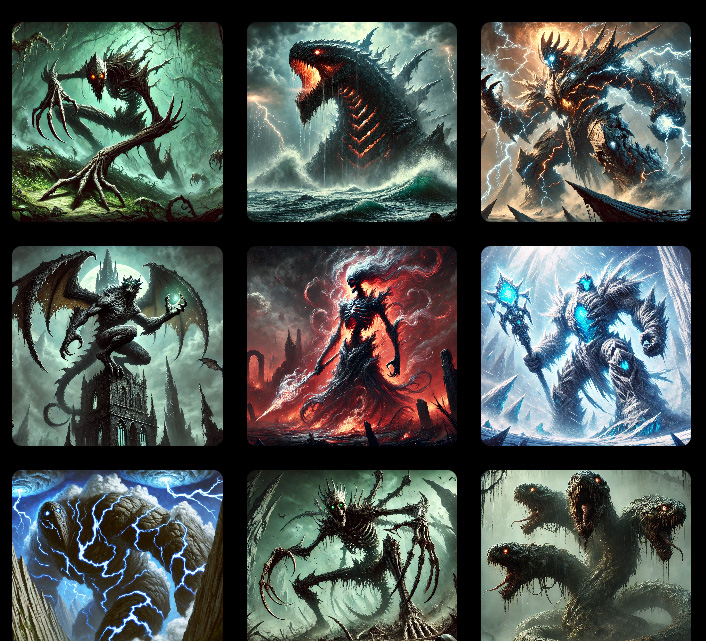
Most enemies in Blightened walk, jump, and attack like you'd expect.
But I wanted at least one that didn’t for the vertical slice.
In comes the Frost Druid.
It doesn’t move like the others. It phases in and out of reality fading to transparency, reappearing behind the player, and chilling the air around it.
Touching it doesn’t just cause damage, it feels wrong.
The Wraith’s knockback includes an audio burst and echoing scream that make every encounter feel unsettling.
Every enemy doesn’t need complexity.
But at least one should create atmosphere.

Once the hub and abilities were locked in, I needed a real level to prove the design worked.
I built the two full ice-themed levels with the 1st being 300 meters wide and the second a lot larger with verticality.
They are not just long. They’re layered.
This 1st level teaches the core mechanics:
If you explore blindly, you might miss something important.
Every section reinforces mechanics without needing a verbose tutorial.
The level doesn’t tell you how to play.
It makes you learn. Trial by fire!
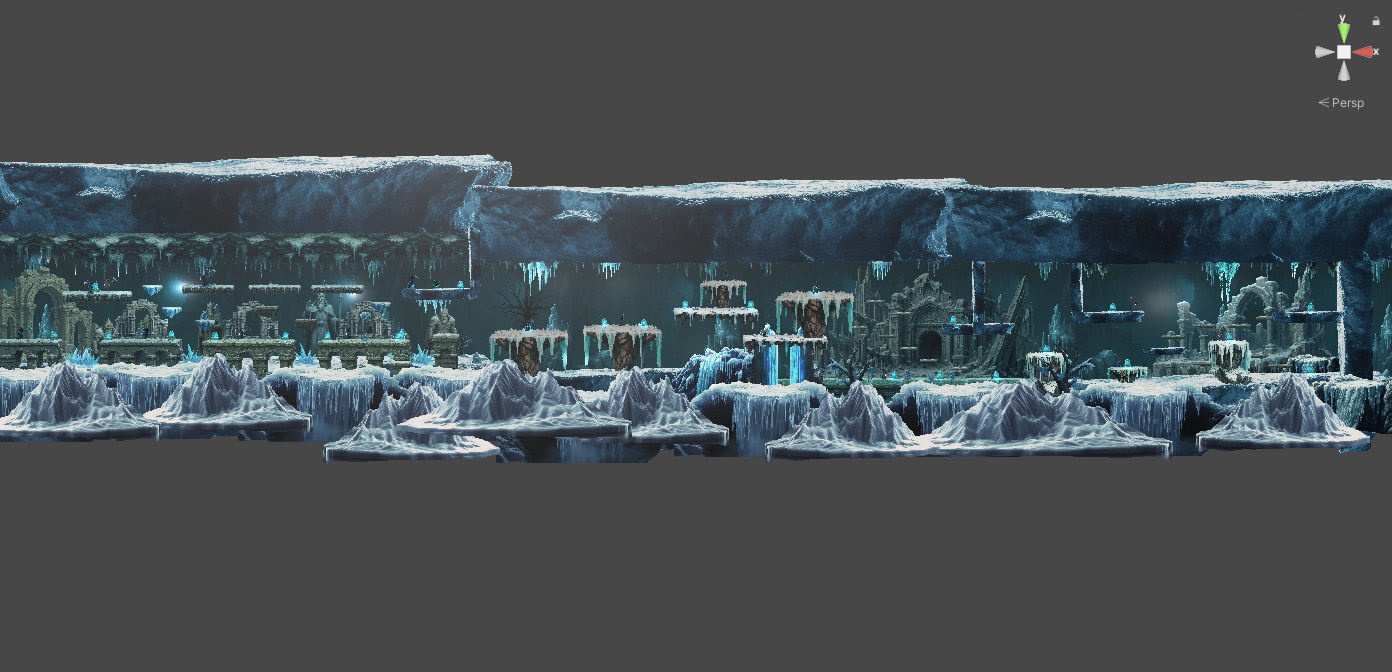
Good environment art is more than decoration.
It tells you what happened — without words.
I decided the first level would be an icy cavern and the second a druid construction site that appears to have been frozen mid-construction.
I started placing props like:
These aren’t just background elements.
They explain to the player that at some point, this place was important.
They raise questions:
These answers don’t come from dialogue.
They come from design.
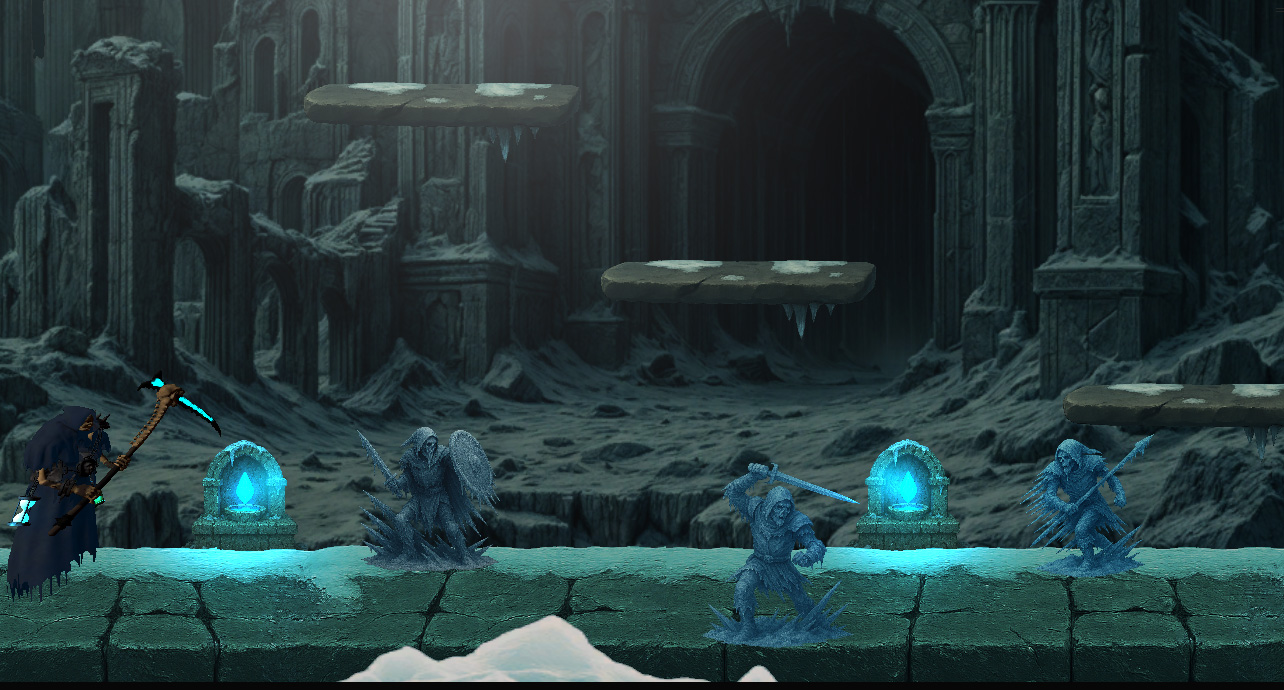
The first time I rebuilt a section of the level, it was because I realized I had placed a platform “just because.”
That’s not good enough.
So I rewired how I thought about every ledge, wall, and gap.
If a platform didn’t create intentional movement, it didn’t stay.
Players shouldn’t just move forward — they should engage with movement as a mechanic.
That’s what makes a platformer feel good.
Not “can I get there,”
But “how do I want to get there?”
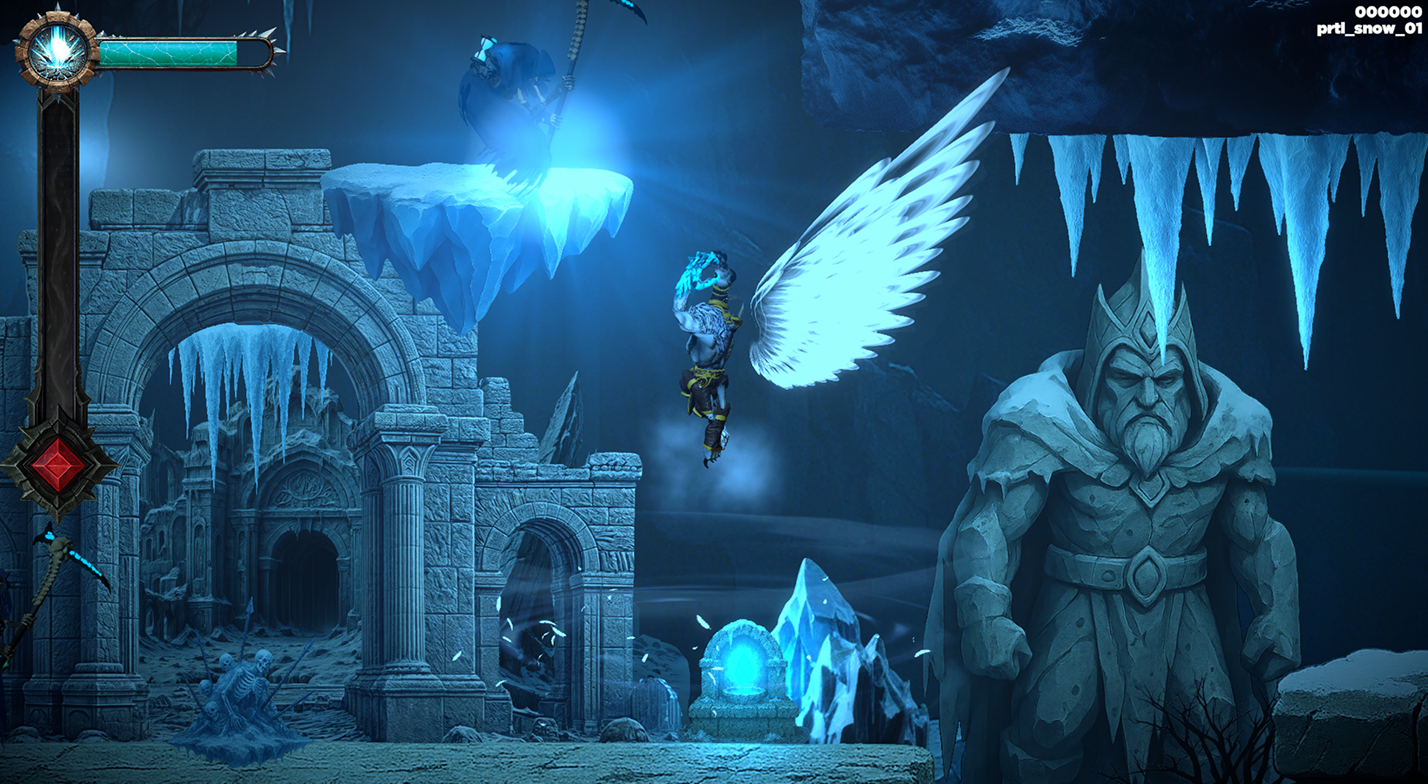
When working in a side-scroller, you risk flatness.
Not just visually, but emotionally.
So I set out to layer the world.
I created deep cavern backdrops that feel carved by time (ice formations, cracks, rock strata, etc).
Then I added soft mist and subtle lighting changes to make depth feel breathable.
And finally, I implemented parallax layers that move differently based on player position.
It doesn’t make the game 3D.
But it makes the world feel larger than the screen and hopefully pulls the player in.
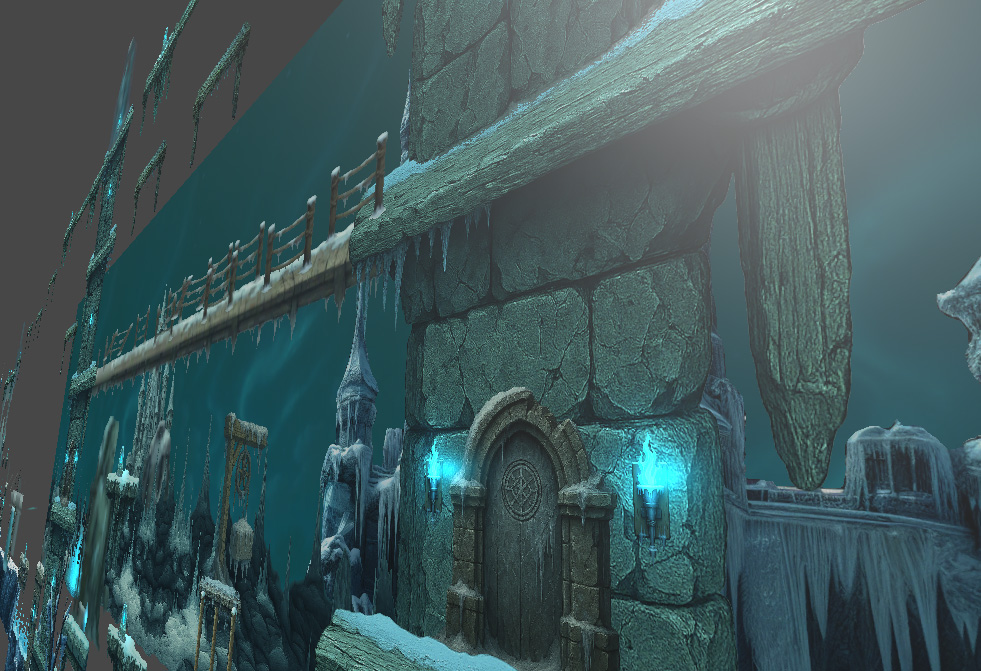
I knew my vertical slice didn’t need ten enemy types.
It just needed three that worked together.
So I built:
Each one fills a role in the encounter triangle.
The Dog pushes you into movement.
The Wing pressures your jumps.
The Wraith makes you second-guess your timing.
It’s not about overwhelming the player — it’s about creating a combat rhythm.
One that shifts depending on who you’re facing.
These three taught me more about my game’s feel than any system I built.
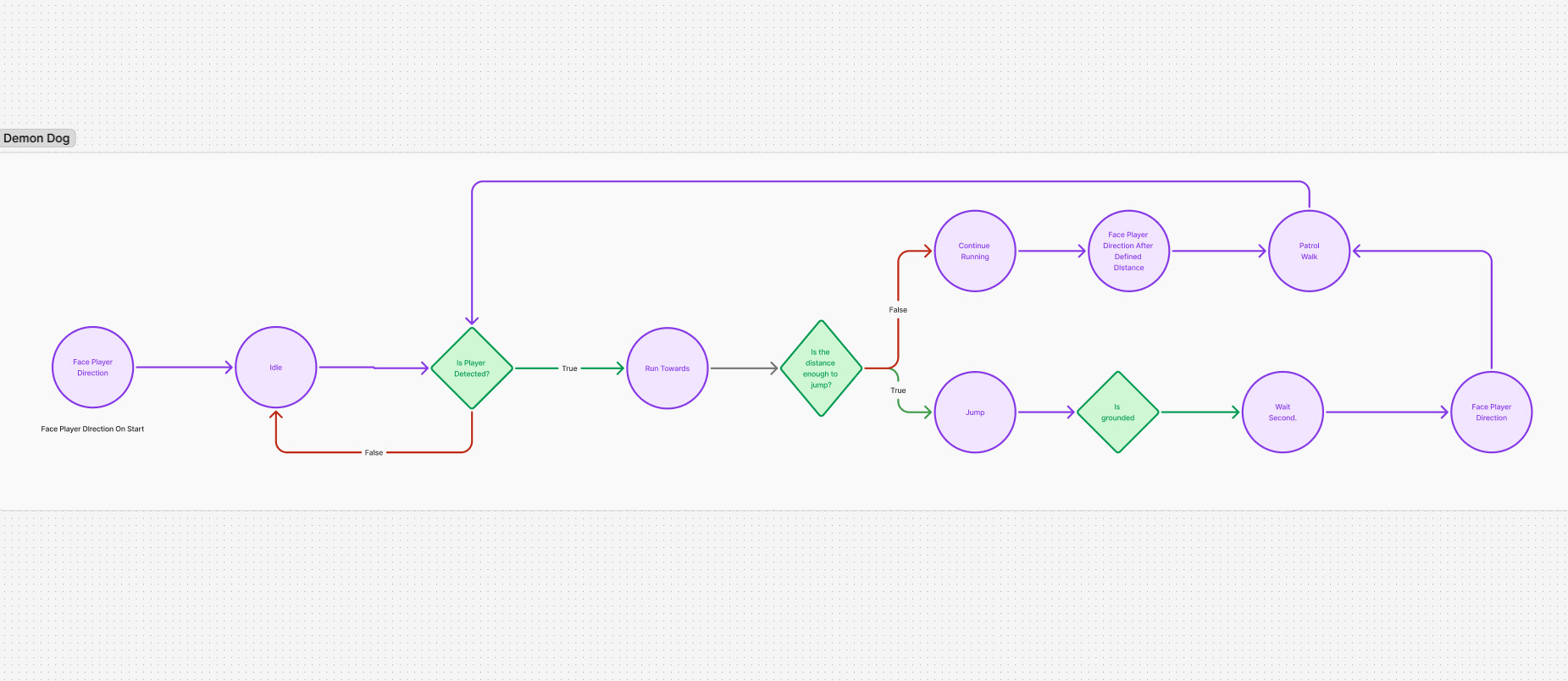
At first, relics were just ability unlocks.
But the more I built the world, the more I realized: these relics may just be a critical part of the story.
Each one is linked to a corrupted creature.
When you pick one up:
It turns upgrades into artifacts.
It gives context to your growth.
And it ties every mechanical gain to narrative expansion.
You’re not just getting stronger.
You’re learning what was lost.
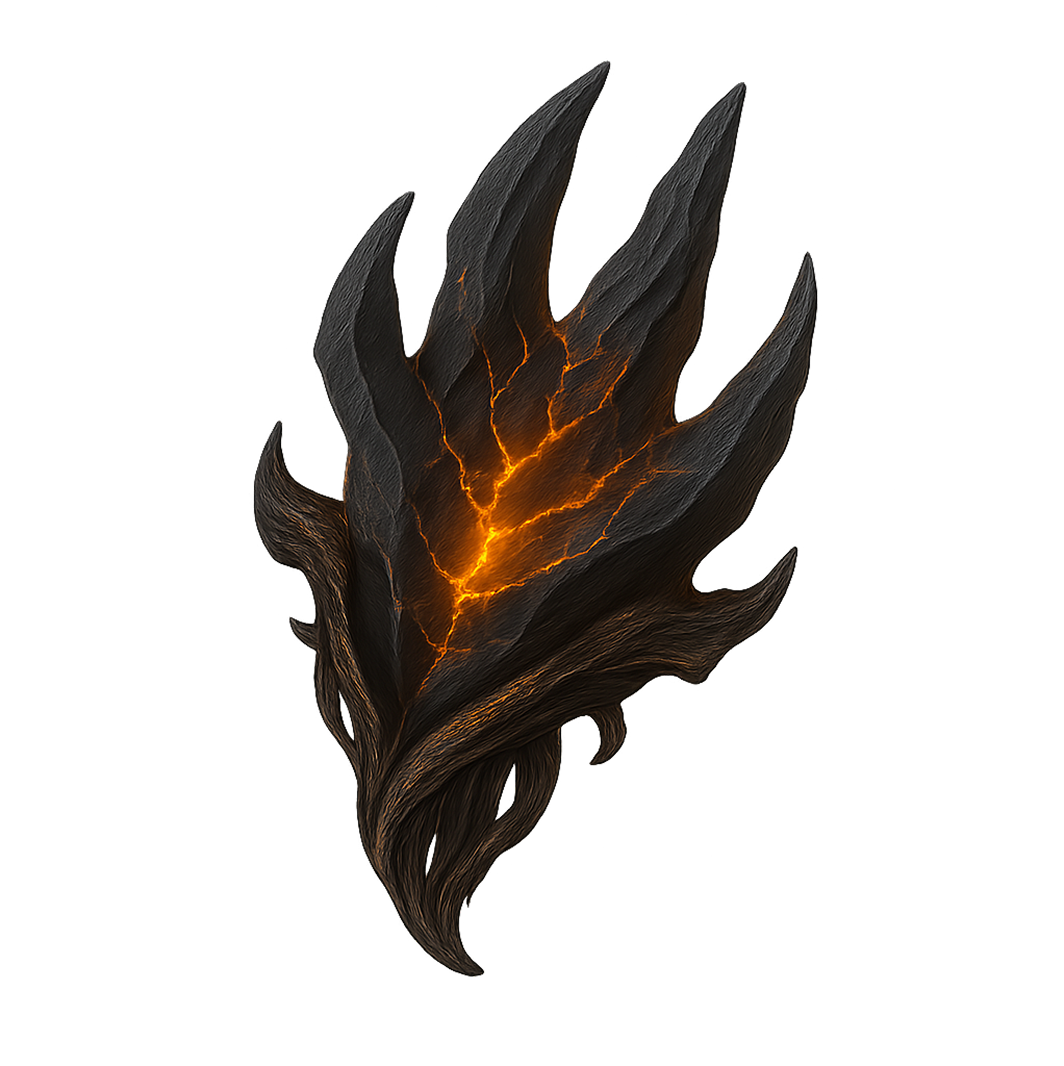
This started with a guy jumping on cubes.
And now…
Every system is functional. Every feature is hooked together.
The vertical slice of Blightened is about to become real:
It’s not a prototype anymore.
It’s a complete playable slice — a window into a full game.
There’s still more to build.
But this?
This is the foundation.
And I’m proud of it.
